An exhibition has opened in London seeking to shine a new light on a little-known member of the Bloomsbury Set whose work was at times as provocative as his life.
The youngest son of a future peer of the realm and Law Lord, Stephen Tomlin had a privileged upbringing, going to Oxford (briefly), and spent a precocious if turbulent short life amongst the Bloomsbury Set of intellectuals.
His lifestyle today suggests he may have been bipolar, and his extracurricular activities show that he wasn’t just bisexual, but enthusiastically so, sleeping around with pretty much anyone who caught his attention. He seems to have been blessed with a remarkable gift of seduction, leaving many a broken heart behind before he himself died aged just 35, likely from drink and drugs.
The American poet Dorothy Parker once famously said that the Bloomsbury Group “lived in squares, painted in circles and loved in triangles”, although Tomlin’s manifold affairs were less loving triangles than extreme stellated dodecahedrons.
As one of the famous Bloomsbury Group, he should be better known, but he isn’t, and now there’s an exhibition to shine a light on this young man’s works.
A portrait of Tommy opens the exhibition, and it’s the one you are most likely to see of him, lounging topless in 1925, and painted by the surrealist John Banting for Eddy Sackville-West’s home in Knole. All three men were likely at times involved with each other.
He was not a painter though, being mainly a portrait sculptor and although he wasn’t prolific, his circle of friends secured him a number of very high profile commissions.
The only portrait sculpture of Virginia Woolf in her lifetime is by Tomlin, and it’s on public display, appropriately, in Bloomsbury, and is considered to be the definitive likeness of the writer.
Apparently, she hated sitting for portraits, writing in her diary in 1924 “there is a little thrush-like creature called Tomlin who wants to sculpt me”, and it was to take him six years of nagging to persuade the waspish writer to eventually agree. Although not graciously, writing later that “I waste afternoon upon afternoon sitting in his rat-ridden and draught-ridden studio: cant’ escape”.
She actually refused to return for the final sitting, so technically, the most famous bust of Virginia Woolf is still unfinished.
One of the casts from the original is on display to look down at in the exhibition, or you can visit Tavistock Square to see it mounted at head height instead.
They’ve placed her alongside an impressive looking man, and despite Stephen’s unorthodox lifestyle he was clearly still close to his family, as the bust is of his father, now The Right Hon Lord Tomlin, cast in 1931 with his father in full uniform as a member of the Privy Council.
It was though to be one of his last works in bronze before he spent his last few years working in ceramic, and there’s a very suggestive piece on display with a provocatively placed leaf over a naked torso.
A rather more substantial piece is the pride of place in the exhibition, of the heavily bearded writer, Lytton Strachey. The bust is actually plaster painted to look like bronze to show off what the final casting would look like, and with its strong naturalism and expressiveness, it’s now considered one of the most venerated portraits of the writer.
The final bronze is now in the Tate.
Elsewhere there’s the reddish bust of Henrietta Bingham, the one woman to break Tommy’s heart and he could never look at the bust again.
You can look at the bust, and more though.
The exhibition, Bloomsbury Stud: The Art of Stephen Tomlin is at the Philip Mould gallery on Pall Mall until 11th August – go in and it’s downstairs.
It’s open Mon-Fri 9:30am to 6pm and is free to visit.

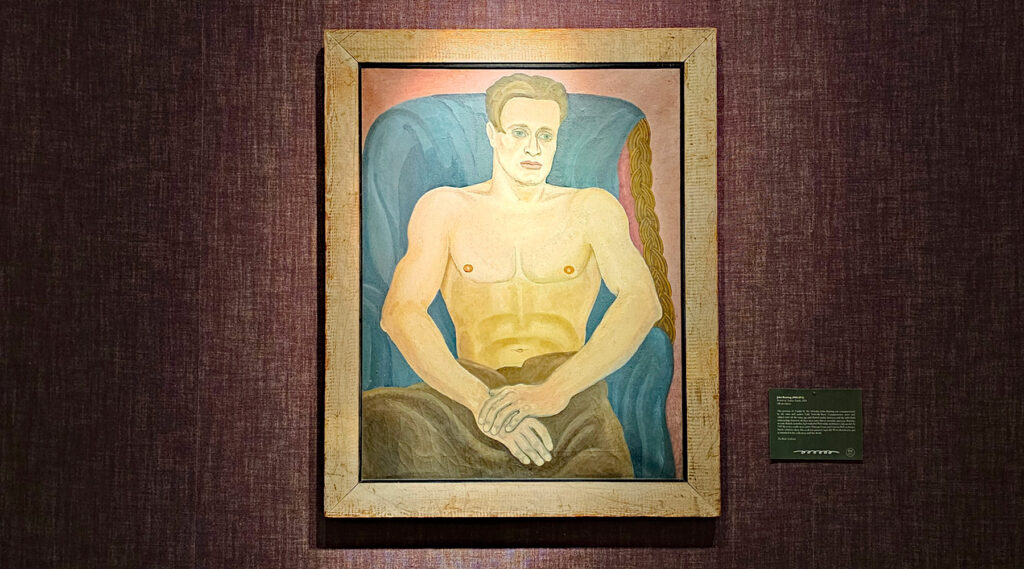
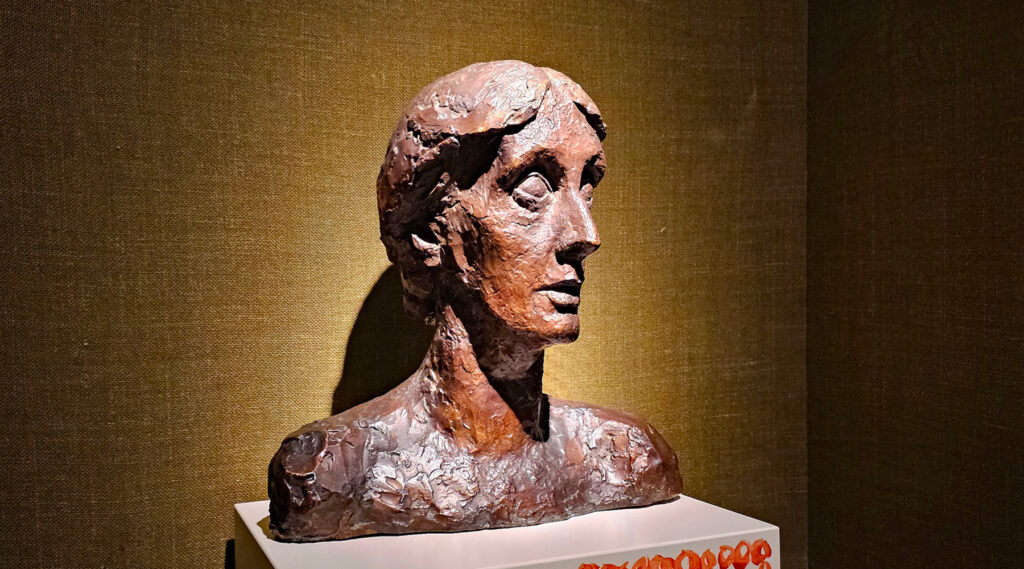
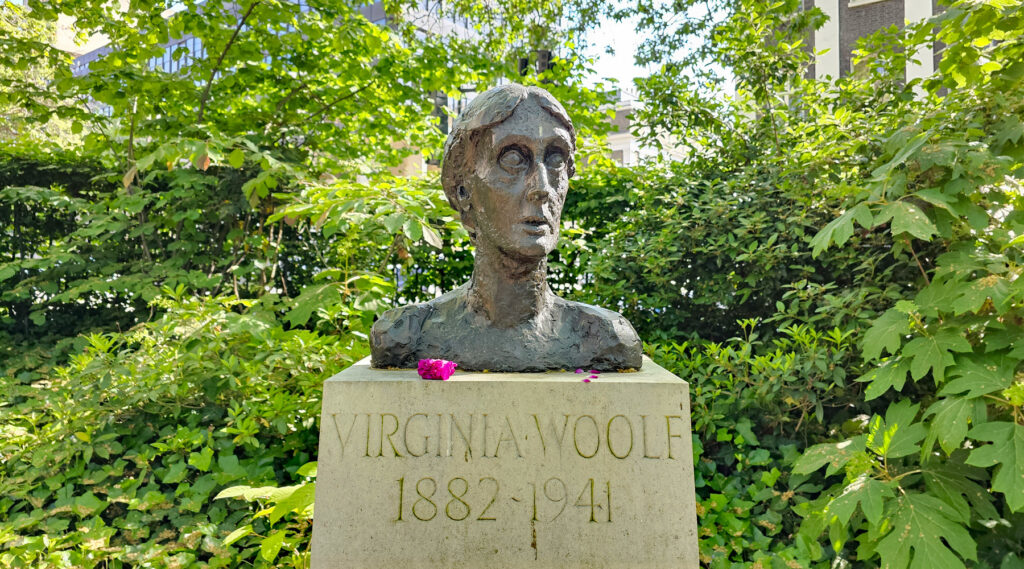
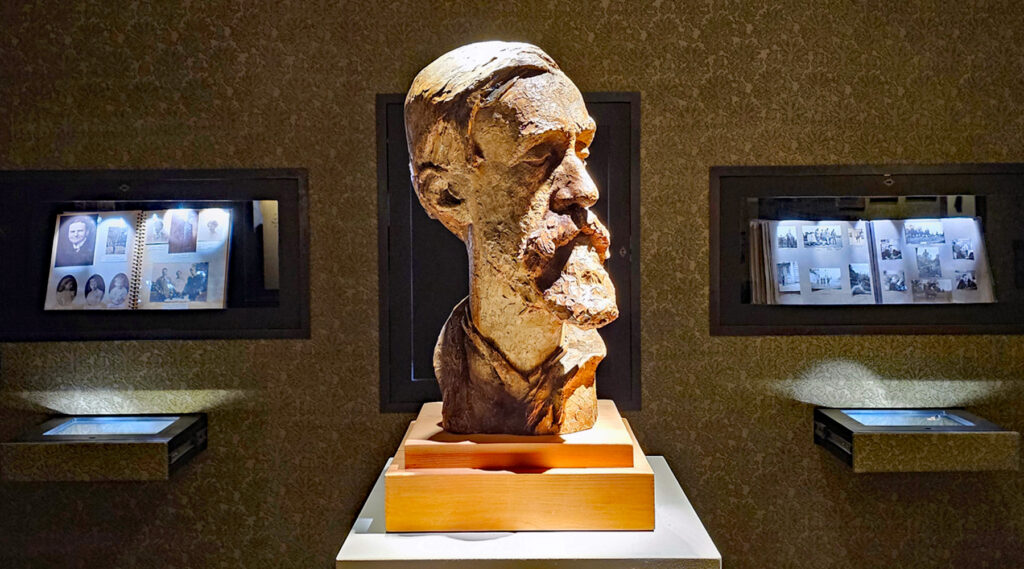
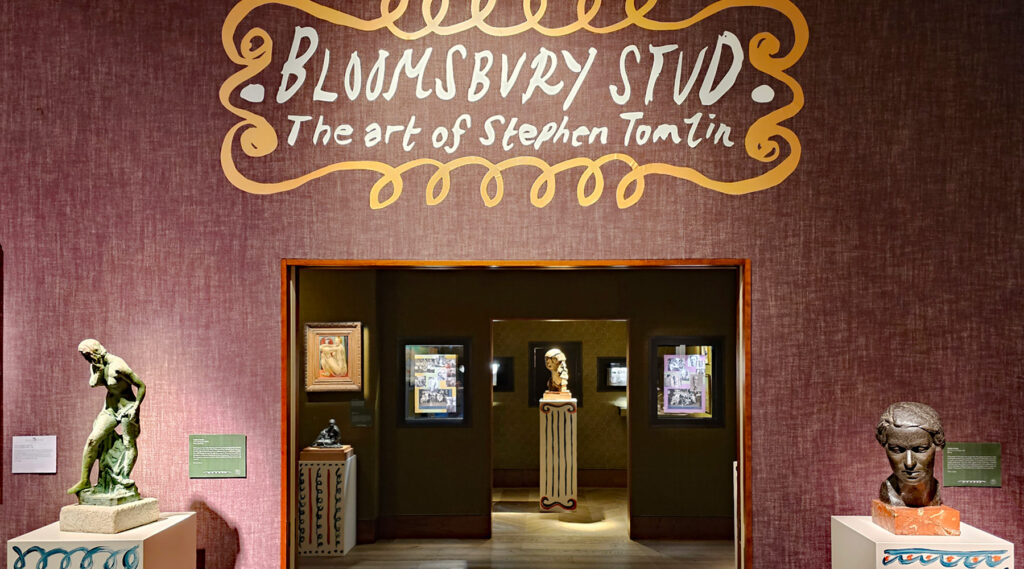






Leave a Reply